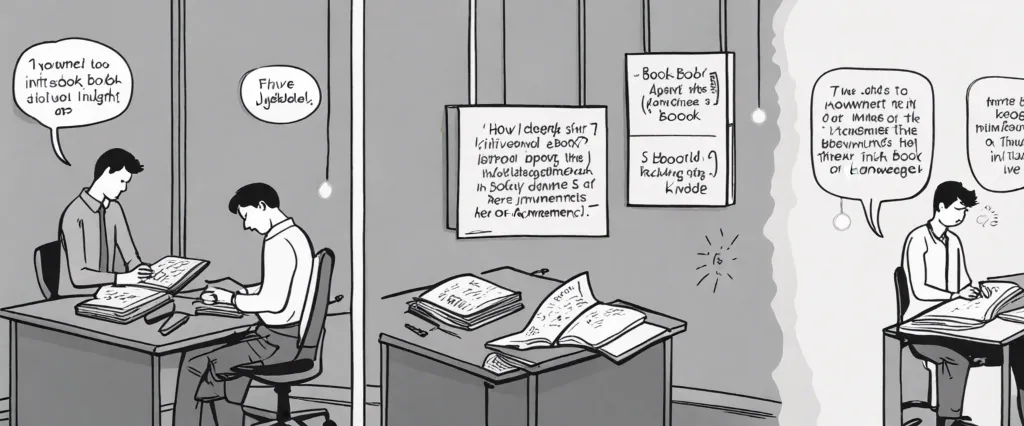In the thought-provoking guidebook “How To ,” written by the brilliant Randall Munroe, readers embark on an unusual journey exploring the science behind various everyday scenarios. As a former NASA roboticist and the creator of the popular webcomic xkcd, Munroe blends his scientific expertise with his signature humor to present a collection of absurd yet enlightening explanations. With captivating illustrations and compelling anecdotes, Munroe takes readers on a captivating adventure, revealing surprising insights into everything from making toast to surviving a volcano eruption. Get ready to delve into Munroe’s unique perspective as he unravels the intricate workings of the world around us and reveals the extraordinary science lurking beneath the surface.
Chapter 1: How to Jump Really High
Chapter 1 of “How To” by Randall Munroe, titled “How to Jump Really High,” explores the scientific and practical aspects of executing a high jump. Munroe, known for his expertise in creating the webcomic xkcd, uses his unique approach to explain complex subjects in a fun and accessible way.
The chapter commences with a fictional scenario of a superhero attempting to jump over a tall building. Munroe uses this example to discuss the various factors involved in achieving a high jump, starting with the concept of energy. He explains that focusing on extra bones or muscles, as often depicted in superhero movies, would not be sufficient to accomplish this feat. Instead, the key lies in converting energy from one form to another.
The author delves into the physics behind jumping, covering topics such as potential energy, kinetic energy, and how to maximize these forces to achieve a higher jump. He explains that jumping primarily relies on muscular power, acceleration, and timing. He also explores the importance of understanding an individual’s body composition, including factors like height, weight, and leg strength.
Munroe then introduces the concept of elastic potential energy and its connection to jumping using a hypothetical scenario involving kangaroos. He illustrates how the tendons and muscles in a human body can act like springs, storing and releasing energy during a jump. This leads to a discussion on the role of physics in optimizing jump height, including the right angle, the importance of landing strategy, and the impact of air resistance.
The chapter concludes by emphasizing the importance of practice and experimentation, highlighting the fact that friends and fellow jumpers can provide valuable insights and ideas for improving technique.
Overall, Chapter 1 provides an entertaining and educational overview of the scientific principles and practical considerations underlying the achievement of a high jump, presented in a manner that is enjoyable for readers of all backgrounds.
Chapter 2: How to Throw Things
Chapter 2 of the book “How To” by Randall Munroe is titled “How to Throw Things” and explores the physics behind throwing objects, as well as numerous humorous scenarios related to throwing various items.
The chapter opens with Munroe posing the question, “What’s the best way to throw something to make it go as far as possible?” He delves into the concepts of velocity, acceleration, and launch angles, explaining how they affect the trajectory and distance of thrown objects. Munroe highlights that while angles and velocities matter, air resistance significantly impacts the results.
Using a combination of witty illustrations and witty humor, Munroe covers a wide range of scenarios involving throwing objects. Some examples include throwing a baseball to reach different targets, launching a water balloon from a rooftop, playing basketball with odd-shaped balls, and even throwing tiny cannons. Through these scenarios, he discusses the importance of finding the right balance between launch angle, velocity, and object characteristics to achieve optimal distance and accuracy.
Throughout the chapter, Munroe emphasizes the importance of experimentation and testing. He encourages readers to use their own judgement and intuition when it comes to throwing objects, noting that even the laws of physics can be somewhat flexible depending on personal circumstances. While throwing objects may seem simple, this chapter highlights the underlying complexity and physics involved, all presented in Munroe’s signature humorous style.
In conclusion, Chapter 2 of “How To” provides an entertaining and informative exploration of throwing objects. It combines an overview of physics principles with amusing scenarios to demonstrate the variables involved in achieving long-distance throws. With his humorous illustrations and light-hearted tone, Munroe piques readers’ curiosity and encourages them to experiment and have fun with the science behind throwing objects.
Chapter 3: How to Dig a Hole
In Chapter 3 of the book “How To” by Randall Munroe, aptly titled “How to Dig a Hole,” the author delves into the art and science behind digging efficient and effective holes. Drawing from his experience as a NASA roboticist and creator of the popular webcomic XKCD, Munroe approaches the topic with an entertaining and informative approach.
The chapter begins by discussing the importance of accurately determining the dimensions of the hole and the required tools for the task at hand. Munroe emphasizes the significance of planning ahead in order to save time and effort during the digging process. He outlines various excavating techniques, ranging from manual methods like shoveling to more advanced techniques such as using heavy machinery.
Munroe also explores the different types of soil and how they affect the digging process. He explains the properties and challenges presented by various soil types, such as clay and sand, and provides tips on how to overcome these challenges effectively. This includes suggestions like wetting the soil to soften it or using different tools for different soil types.
Furthermore, the author delves into the topic of safety during digging operations, stressing the importance of taking precautions to ensure the well-being of the digger. Munroe highlights potential dangers, such as collapsing trenches or striking utility lines, and suggests methods to avoid or mitigate these risks.
Throughout the chapter, Munroe combines scientific explanations, practical tips, and humorous examples to engage the reader. He incorporates illustrations and diagrams, giving readers a visual understanding of the concepts discussed.
In summary, Chapter 3 provides a comprehensive guide to digging a hole efficiently and safely. Munroe’s informative and entertaining style make it an enjoyable read while equipping readers with useful knowledge for any digging endeavor.
Chapter 4: How to Play the Piano

Chapter 4 of “How To” by Randall Munroe is titled “How to Play the Piano.” In this chapter, Munroe breaks down the process of playing a piano into simple steps, focusing on the basics of scales, chords, and rhythm.
Munroe begins by highlighting the importance of understanding how a piano works. He explains that pianos are structured in a pattern of white and black keys, where the white keys represent the so-called “natural” notes and the black keys signify the “sharp” and “flat” notes. By understanding this basic structure, beginners can easily identify and locate different notes on the piano.
The chapter then delves into the concept of scales – a sequence of ascending or descending notes. Munroe introduces readers to the C major scale, which consists of the white keys on a piano. He encourages readers to practice playing this scale with both hands to develop coordination and familiarity with the instrument.
Moving on, Munroe introduces chords and explains that they are formed by playing multiple notes simultaneously. He explains the concept of triads, which are basic three-note chords, and demonstrates how various chords can be formed using different combinations of piano keys. A helpful diagram is provided to illustrate these chord formations.
Lastly, Munroe covers the importance of rhythm in piano playing. He emphasizes the significance of understanding note values, time signatures, and tempo. Munroe provides examples of common time signatures and encourages readers to practice playing notes with different durations, gradually building their ability to play in time.
Overall, Chapter 4 of “How To” serves as a beginner’s guide to playing the piano, offering an accessible and step-by-step approach to learning key concepts such as scales, chords, and rhythm.
Chapter 5: How to Make a Sandcastle
Chapter 5 of the book “How To” by Randall Munroe is titled “How to Make a Sandcastle” and explores the science and techniques behind constructing a sturdy and impressive sandcastle.
The chapter begins with Munroe highlighting the importance of finding the right sand for building a sandcastle. He explains that sand with larger and rounded grains works best as it allows for better compaction and water flow, leading to a stronger structure. Munroe advises readers to choose a location near the waterline to enjoy the benefits of damp sand, which is essential for cohesive castle building.
To build a sandcastle, Munroe recommends starting with a solid base by packing damp sand into a bucket or form, and then flipping it over to create the tower’s sturdy foundation. He encourages readers to experiment with different ratios of sand and water to achieve the desired consistency.
Munroe also explores the science behind building arches and tall structures, explaining the importance of achieving stability through proper weight distribution. He discusses techniques such as wetting the sand slightly before adding layers, creating internal support structures, and adding water to strengthen the sand.
The chapter delves into various architectural designs, including towers, walls, and moats, with Munroe sharing tips on creating intricate details using specialized tools or household objects like spoons and brushes. He provides playful suggestions to incorporate creativity and experimentation into sandcastle building.
Furthermore, Munroe addresses the challenges often encountered, such as the impact of waves, time, and gravity on a sandcastle’s longevity. He suggests using additional supportive structures like wooden beams or mesh to extend its lifespan.
In this chapter, Munroe combines scientific principles, practical techniques, and creative ideas, guiding readers through the process of constructing a sandcastle while highlighting the role and joy of experimentation and imagination in the process.
Chapter 6: How to Power Your House
Chapter 6 of the book “How To” by Randall Munroe is titled “How to Power Your House.” In this chapter, Munroe explores various techniques and technologies that can be used to generate electricity for households.
Munroe starts by discussing solar power, explaining how photovoltaic cells work to convert sunlight into electricity. He provides insights into the efficiency and cost of solar panels, as well as their environmental impact. The author also touches on the importance of battery storage to store excess energy generated during the day for use at night.
Moving on, Munroe delves into wind power and its potential for residential use. He explains how wind turbines convert the kinetic energy of wind into electrical energy and discusses factors such as turbine size, wind speed, and placement considerations for optimal efficiency.
Next, the author explores hydroelectric power, which harnesses the energy of flowing or falling water. Munroe explains the different types of hydroelectric systems, ranging from large-scale dams to small-scale micro-hydro installations.
Munroe goes on to mention other alternative sources of energy, such as geothermal power from the Earth’s heat and tidal power utilizing the movement of ocean tides. He highlights the benefits, challenges, and limitations of these methods.
Towards the end of the chapter, Munroe briefly discusses the use of fossil fuels for electricity generation, highlighting their negative environmental impacts. He emphasizes the importance of transitioning to renewable energy sources to mitigate climate change.
In conclusion, Chapter 6 of “How To” provides an overview of various technologies and techniques for powering a house sustainably. Munroe emphasizes the growing importance of renewable energy sources and encourages readers to consider these alternatives for their household electricity needs.
Chapter 7: How to Jump Out of a Plane
Chapter 7 of “How To” by Randall Munroe explores the process of jumping out of a plane and surviving. The chapter delves into various aspects such as parachute design, physics, and safety precautions.
Munroe emphasizes the importance of thorough preparation before attempting a skydive. He explains the significance of understanding gravity and its effects on the human body during the free fall. Munroe breaks down the physics behind terminal velocity and how it determines the appropriate altitude for deploying a parachute.
The author then delves into the design of parachutes, explaining the key components and their functions. Munroe highlights the reliability and safety measures incorporated in modern parachutes, while also discussing historical developments, including the evolution from round parachutes to the more advanced ram-air parachutes used today.
A major portion of the chapter is dedicated to discussing safety precautions while skydiving. Munroe emphasizes the importance of proper training, equipment maintenance, and following the correct procedures during the activity. He delves into topics like reserve parachutes, emergency scenarios, and landing techniques to maximize safety.
Throughout the chapter, Munroe incorporates his trademark humor and uses illustrations to simplify complex concepts. He engages the readers in thought experiments, considering hypothetical situations like jumping out of a plane without a parachute and ways to improve survival chances.
In summary, Chapter 7 of “How To” provides an informative insight into the intricacies of skydiving. Munroe combines his expertise in physics and engineering with his witty writing style to deliver an engaging guide on successfully completing a skydive while prioritizing safety.

Chapter 8: How to Predict the Weather
Chapter 8 of the book “How To: Absurd Scientific Advice for Common Real-World Problems” by Randall Munroe explores the fascinating and complex field of weather prediction. Munroe, a former NASA roboticist and creator of the popular webcomic xkcd, takes a humorous and informative approach to explaining the science behind predicting the weather.
The chapter begins by debunking common misconceptions about weather forecasting. Munroe emphasizes that predicting the weather accurately beyond a few days is incredibly challenging, as it relies on various unpredictable factors. However, he introduces several inventive ways to make crude weather predictions on short notice.
Munroe suggests using a barometer, a device that measures atmospheric pressure and allows you to gauge changes in weather patterns. By observing the pressure trends, you can make rough predictions about the onset of storms or fair weather. Moreover, he describes other indicators such as clouds, wind patterns, and even animal behavior that can provide valuable clues about imminent weather changes.
The chapter also delves into the use of satellites and weather radars, which provide real-time data on atmospheric conditions and help meteorologists create accurate forecasts. Munroe humorously discusses how he devised a plan to hijack weather satellites, demonstrating how technology can be used effectively to predict and track weather patterns.
Despite the complexity and unpredictability of weather, Munroe emphasizes that gathering data from different sources and employing logical reasoning can improve your chances of making accurate weather predictions. However, he concludes by highlighting that new, groundbreaking technologies often contribute significantly to enhanced weather forecasting models.
Overall, Chapter 8 provides a layperson’s guide to understanding weather prediction, offering a blend of scientific explanations and Munroe’s trademark wit to engage readers in this captivating scientific field.
After Reading
In conclusion, Randall Munroe’s book How To provides readers with a fascinating and thought-provoking exploration of everyday scenarios and the scientific principles that explain them. Through his unique blend of humor and scientific expertise, Munroe guides us on an enlightening journey, revealing the underlying mechanics behind various phenomena and offering unconventional yet practical solutions. This book not only entertains but also encourages us to look at the world around us in a whole new light, inspiring curiosity and a thirst for knowledge. How To is a must-read for those who seek to understand and appreciate the marvels of science in our daily lives.
1. “The Magic of Thinking Big” by David J. Schwartz
This book empowers readers to think beyond their limitations and tap into their full potential. It offers practical advice on setting goals, overcoming obstacles, and cultivating a positive mindset, making it similar to “How To” by Randall Munroe in its practical approach to problem-solving.
2. The Checklist Manifesto: How to Get Things Right” by Atul Gawande
Written by a surgeon, this book explores the power of checklists in improving efficiency, productivity, and avoiding errors in complex tasks. It shares valuable insights into how professionals in various fields can benefit from the use of simple yet effective checklists, much like the approach taken in “How To” by Randall Munroe.
3. Deep Work: Rules for Focused Success in a Distracted World” by Cal Newport
In a world filled with distractions, Newport’s book offers a roadmap to achieving deep, focused work that leads to meaningful and impactful results. With practical strategies and insights, the author guides readers through the steps required to eliminate distractions and cultivate a productive work environment, much like the practical nature of “How To.”
4. Thinking, Fast and Slow” by Daniel Kahneman
Written by Nobel laureate Daniel Kahneman, this book delves into the two systems that drive our thinking: the fast, intuitive system and the slow, deliberate system. Kahneman offers intriguing insights into how our minds work, how we make decisions, and how we can improve our decision-making abilities – a theme that resonates with the problem-solving nature of “How To.”
5. Atomic Habits: An Easy & Proven Way to Build Good Habits & Break Bad Ones” by James Clear
Clear’s book provides a clear framework for creating and sustaining good habits while breaking free from destructive ones. By focusing on small, incremental changes, readers are guided towards lasting personal and professional transformations. Much like “How To,” this book offers practical advice that can be implemented immediately and yield positive results.




